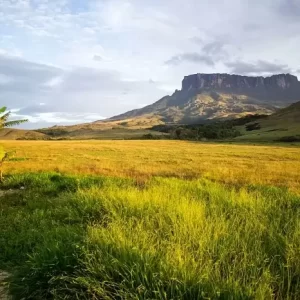Tucked away in the heart of the Marietas Islands, just off the coast of Riviera Nayarit, Mexico, lies a breathtaking natural wonder that seems almost too magical to be real — a secluded beach hidden inside a cave, accessible only through a secret tunnel beneath the ocean’s surface.
Known as Playa del Amor, or the “Beach of Love,” this enchanting destination captivates travelers not just with its beauty, but with the adventure required to reach it. The beach lies inside a collapsed sea cave with a circular opening above, allowing golden sunlight to pour in — while the entrance remains cleverly concealed from view.
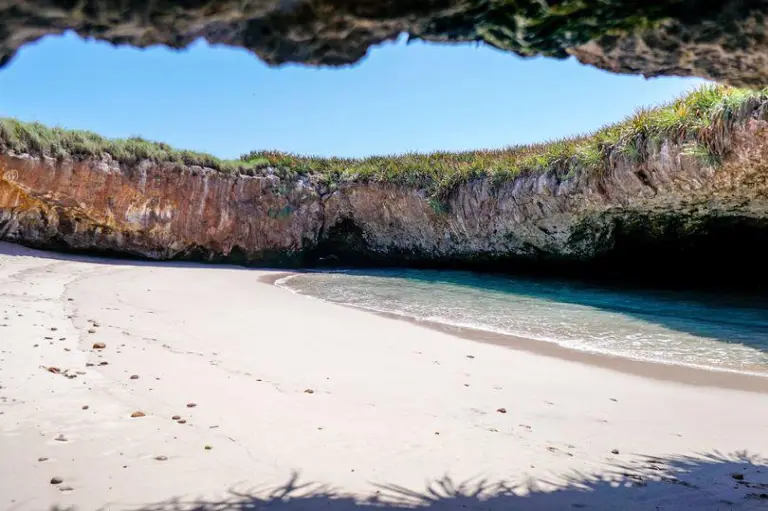
>> Fingal’s cave: Scotland’s mystical cathedral beneath the sea
The Journey to the Hidden Beach
To reach Playa del Amor, visitors must swim through a narrow tunnel that connects the open sea to the hidden cove. Though partially submerged, the tunnel is wide enough to allow swimming on the surface — no diving gear is necessary, just basic swimming skills and a sense of adventure.
The good news is, local guides and tour operators now know exactly where the secret passage lies, and many boats depart daily from Punta Mita or Puerto Vallarta, offering guided tours to this mysterious beach.
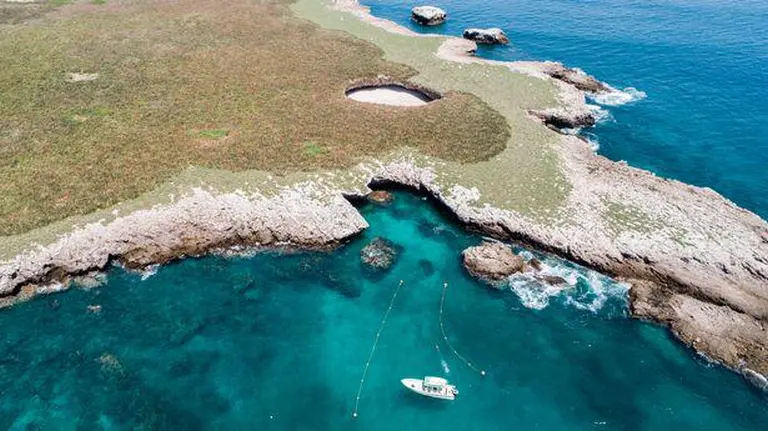
Strict Conservation for a Fragile Paradise
In order to preserve Playa del Amor’s fragile ecosystem and pristine condition, Mexican authorities strictly regulate access. Only 117 visitors per day are allowed on the island, and each person may only spend 20 minutes on the beach itself. These rules are essential to protecting the delicate marine and coastal environment.
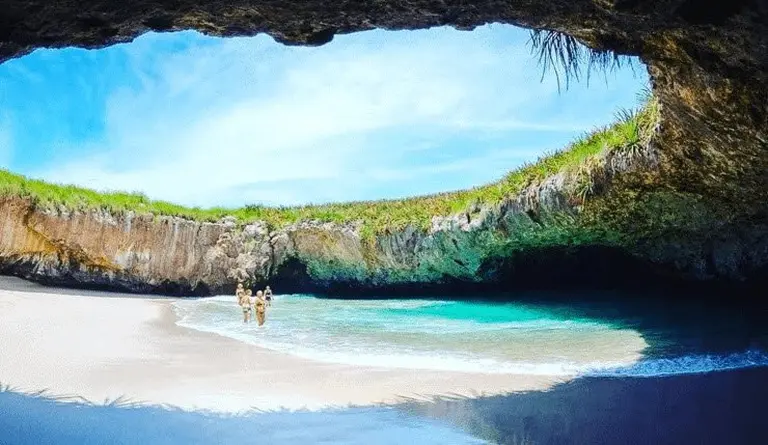
>> Harpea cave – A natural masterpiece and the tale of a living earth
A Biodiversity Hotspot
Beyond its hidden beach, the Marietas Islands are a sanctuary for wildlife. Birdwatchers can spot the rare blue-footed booby, a species typically found only in the Galápagos and Marietas. The surrounding waters are rich in marine life, offering chances to see sea turtles, dolphins, and even humpback whales during migration season.
For those eager to dive deeper — literally — the area also features vibrant coral reefs perfect for snorkeling and scuba diving.
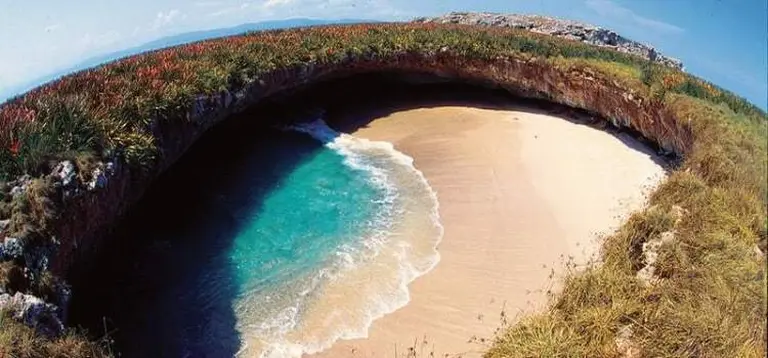
Playa del Amor isn’t just a beach — it’s a secret world carved by nature, a place that rewards the curious and brave. Whether you’re swimming through the tunnel, spotting exotic birds, or simply basking beneath the sunlight filtering through the cave roof, the hidden beach of Mexico promises a once-in-a-lifetime adventure.
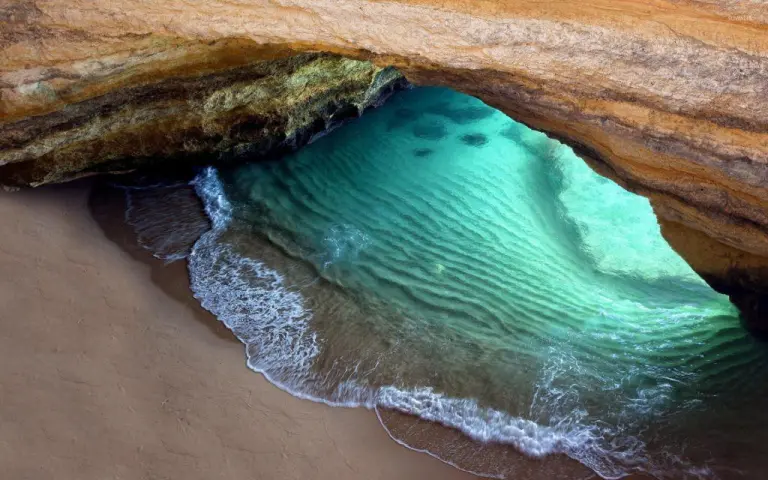
>> Cosquer cave: An underwater gateway to prehistoric times
FAQ
What is the Hidden Beach in Mexico?
The Hidden Beach, or Playa del Amor (Lover’s Beach), is a secluded stretch of white sand hidden inside a sunlit crater, surrounded by rocky walls with a gaping hole in the roof that opens to the sky. What makes it even more fascinating? You can only reach it by swimming through a narrow water tunnel carved into the rock.
It’s part of the Islas Marietas National Park, a protected marine reserve off the coast of Puerto Vallarta in Riviera Nayarit.
Where exactly is it located?
The beach is located on Isla Redonda, one of the Marieta Islands in the Pacific Ocean, about:
- 1 hour by boat from Puerto Vallarta
- 20–30 minutes by boat from Punta Mita or Sayulita
How do you get to the Hidden Beach?
You’ll need to book a licensed eco-tour operator to access the islands. Here’s how the journey works:
- Boat ride to the Marieta Islands
- Swim or kayak through a 25-meter-long water tunnel (at low tide, 6 ft of headroom)
- Arrive inside the sunlit crater to find the hidden paradise
Note: Swimming is required — you must be comfortable in the ocean. Life vests, snorkels, and guides are provided.
Is the tunnel safe to swim through?
Yes, with a guide and at the right tide conditions. The tunnel has no roof, allowing light and air, and is usually calm during low tide. However, entry is strictly regulated by the park to ensure safety and environmental preservation.
Why is it called the “Hidden” or “Lover’s Beach”?
“Hidden Beach” refers to its concealed location inside a crater, invisible from the ocean unless you’re right at the entrance.
“Playa del Amor” (Lover’s Beach) reflects its romantic, secluded setting, perfect for couples and dreamy escapes.
Is the crater natural or man-made?
The crater is natural, but its formation is thought to have been influenced by military testing in the early 1900s when the Mexican government used the islands for bombing practice. Over time, nature reclaimed the space, and today it’s a pristine ecological reserve.
What activities can I do there?
Most tours combine visits to Hidden Beach with other activities around the Marieta Islands:
- Snorkeling in crystal-clear waters full of tropical fish
- Whale watching (December–March)
- Bird watching, especially for the rare blue-footed boobies
- Kayaking & paddleboarding
- Exploring sea caves and arches around the islands
How many people can visit per day?
To protect the ecosystem, the Mexican government limits:
- Only 117 visitors per day
- A 20-minute time limit per group on the beach
- You must book well in advance through certified tour operators
Do I need a permit or special access?
Yes. Access is highly regulated, and you cannot go on your own. Only authorized tour companies are allowed to bring visitors. Your tour fee includes:
- National park entry permit
- Conservation fee
- Equipment (snorkel, fins, vest)
- Guide and safety briefing
When is the best time to visit?
- Dry season (November to May) offers the best weather
- Early morning tours are best for calm waters and fewer crowds
- Avoid stormy days — tours may be canceled for safety
Pro Tip: Plan your trip during whale-watching season (Dec–Mar) for a bonus wildlife experience!
What should I bring?
- Waterproof camera or GoPro
- Reef-safe sunscreen
- Swimwear and towel
- Change of dry clothes
- Waterproof bag
- Snorkeling gear (if not provided by your tour)
Is it family-friendly?
Yes — for older children and teens who can swim confidently. The tunnel swim may not be suitable for very young kids or anyone uncomfortable in the ocean.
Why is it considered a must-visit destination?
Because no other beach in the world looks like this. The feeling of emerging from a narrow ocean tunnel into a hidden world of golden sand and blue sky is absolutely magical. It’s a perfect mix of natural wonder, mystery, and thrill.
The Hidden Beach of Mexico is one of the most unique and mesmerizing coastal wonders in the world. With its secret cave entrance, turquoise waters, and rich marine life, it’s no wonder it’s on many travelers’ bucket lists. Whether you’re seeking adventure, romance, or jaw-dropping views, this hidden gem delivers the magic.



